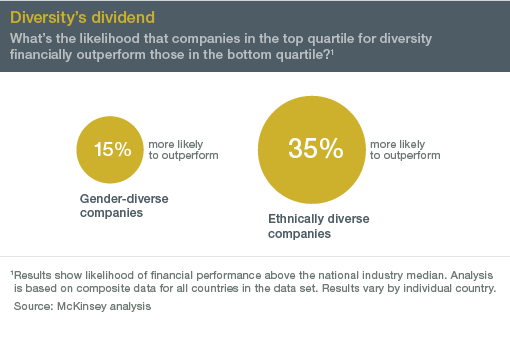Graduate recruitment can be expensive and not always successful, with heavy investment needed at the upstream identification end. There is a high risk of low return on that investment if the downstream end isn’t tightly managed. Large corporations have huge budgets to invest on job fair stands and online campaigns.They make scores of offers. But all is not lost for SMEs if they go about the exercise in a structured and strategic way. They will still be able to attract the best candidates for their organisation, if their graduate recruitment process is sharp.
Best as we know, is a very nuanced word.
I started my early career running graduate recruitment programmes and today I observed improvements, contradictions, some changes and the same old. Some things that you would think would have changed, simply haven’t. Graduates are pretty much the way they have always been. Some are open, others arrogant. Some get it, others don’t. Some are focused others are not.
Managing expectations
The World Economic Forum report lists the 5 things that Millennials look for in a job .Holidays, working with great people and flexible hours are important factors, with money and job security listed at the top. Research from Deloitte indicates work life balance, professional development, sense of meaning, the impact on society and high quality products are also key drivers.
My own experience would be in line with the Deloitte research, although work-life balance was not mentioned once by any one of the hundreds of graduates I talked to this year. The focus was more on lifestyle in general. I found that the connection to family seemed stronger than I had encountered in other years. They key mentions to me were: career advancement (very important) ethical products and leaders and meaningful, impactful work.
Here are 6 graduate recruitment tips for SMEs
But what do SMEs have to do to get the right talent for their organisations?
1. Career Services
University Careers services continue to be mixed. Their web sites are easier to navigate than I remember and they do seem to be more in touch with what’s going on in the market than before. In general I found the level of CVs higher than in previous years, so they are obviously working with their students to produce better results, which is always a positive. Some use their job boards as revenue generating operations and charge for their service. Others have fees for a placement. I didn’t use these options, which was a good decision. I found like any job board the results were generally poor and it was direct approach via my network and digital sourcing worked best. LinkedIn Recruiter was helpful to a point. The quality of contact varied between universities with some acting as if they were doing me a favour connecting me to “their graduates”. I bypassed their system and used general sourcing methodologies.
2. Values and Vision
Looking for employment in line with their values and vision seems to be a key motivator for 2017 graduates. Many are open to working for SMES especially those that replicate their own beliefs. So although hiring managers from SMEs fear competition from the top players, many students are looking for smaller more flexible environments. Some of the big name employers are perceived to be working with, or have strong links with top ranked universities, giving preferential treatment to graduates from those establishments. A strong big name employer brand isn’t necessarily always going to win the day. In October 2016 budget supermarket Aldi out-positioned Google in the Times Top 100 Graduate Employers.
Lifestyle decisions seem to be critical. I observed larger numbers than usual being very specific about their general needs with regard to friendship groups, relationships, family commitments and geographic location. There was no mention of work life balance with regard to time, even those new graduates who are already parents. And there where some. I saw little evidence of graduates yearning for independence and desperate to escape the nest. Rather the reverse. Family commitments seemed more significant and many had lived at home to save money during university to reduce student debt. We looked for indications of independence in other ways. A high number openly referenced the influence of their parents. Almost all had worked to support themselves through university and workplace exposure was an added bonus. There seemed to be a higher number of mature students.
3. Speed is of the essence
Today the recruitment process needs to be speeded up. Graduates expect rapid responses and high levels of engagement. Corporates are frequently not set up to reach decisions as fast as they need to be for this demographic. Expect high levels of fall out if you are not running a smooth operation with a clear timeline to manage expectations. Very often final year students have exams and dissertations well into July of the academic year. Making your application process as seamless as possible is important without asking them to jump through too many selection hoops. Regular communication is vital even if you have nothing to say. They like to be kept in the loop. Many will not read emails for days – agree in advance what platform you are using and advise them to monitor communication channels frequently. This is where smaller companies may have an edge with fewer approval layers. I advise you to use it.
4. Online presence
This generation is digitally savvy and will research your company online. Skilled and experienced at picking up digital anomalies, all online communication needs to be on point. Any detail no matter how small will be picked up. Because I focused on online sourcing, I tapped into students who had a reasonable professional presence. Anecdotally I would say that this had increased in the last year. Employers need to have compelling web sites with some space dedicated to the career advancement featuring younger employees.
5. Long short lists
Graduates will agree to participate in a process and do accept alternative offers if they receive something better or just something quicker. It’s important to have longer than usual short lists and to move swiftly on final decisions. This is where ongoing communication is imperative.
6. Everyone makes the pitch
Graduates need to see enthusiasm from everyone in the process. They are looking for work as a life experience which is a major shift. Many are saddled with significant debt and commitment to future training and career development needs to be spelled out. They have expectations of corporate life gleaned from TV and the movies. Very often the office on a plant or some industrial site is a far cry from what they have in their heads. Your brand needs to be sold convincingly by everyone. I used researchers nearer to the demographic in age than I am and they provided invaluable insights and could put expectations into perspective. One researcher was well versed on where the best music scenes could be found in relation to the hiring locations. This proved to be invaluable information, clearly something I might struggle to do.
So although SMEs have concerns that the big corporates will cream off the best talent, a strategic, targeted, flexible search which taps into core values of the graduating demographic will prove to be a big bonus. SMEs still have the opportunity to attract the best talent for them.
If your organisation wants support for graduate recruitment contact us.




















